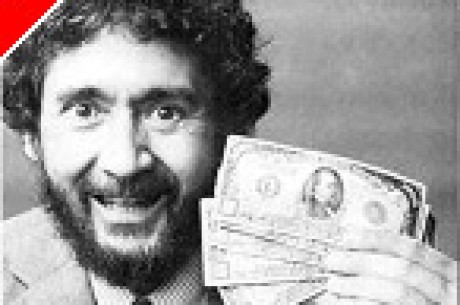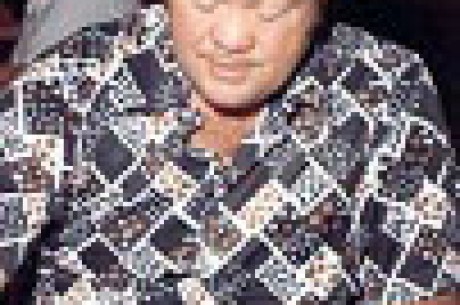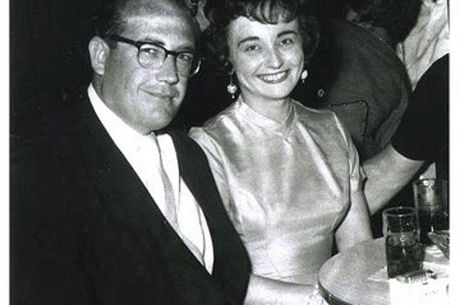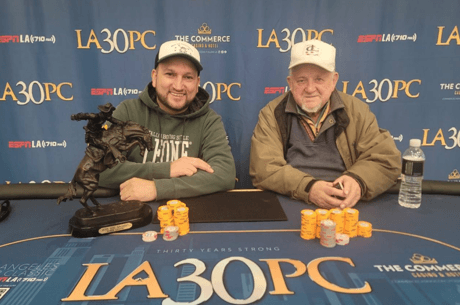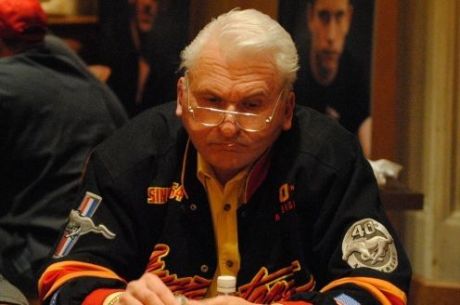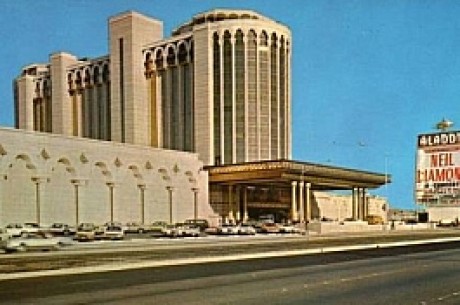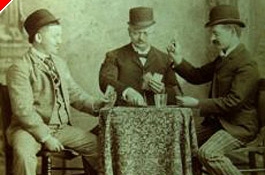Legends of the Game - Harold S. Smith, Sr.
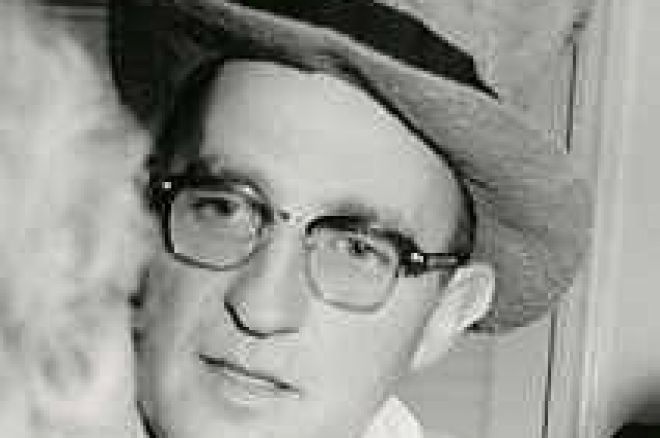
A lot has been written about the great gamblers of the 20th Century. Men like "Titanic" Thompson, Nick "The Greek" Dandolas, and poker champions like Johnny Moss and Doyle Brunson fill our minds, but a few of the greatest gamblers of all time have been all but forgotten. One of those men is Harold S. Smith, Sr.
Like the "The Greek" and "Titanic," Harold was willing to make huge bets. In the 1960's, he said, "I will bet my money with you in any amount you name, and I keep a million dollars cash on the premises to pay off if I lose." Amarillo Slim has made similar bets, but even he didn't risk a whole casino on the single throw of the dice!
On February 23, 1910, Harold S. Smith was born in Denver, Colorado. His father, later known simply as "Pappy", was a man of many talents, most of which involved carnivals and fairs. Roulette-style games were his specialty, and son Harold began working with him at Chutes-at-the-Beach in San Francisco during the summer of 1924. He had planned on playing the violin for a living, but the gambling side of him began taking over at the tender age of fourteen.
In the 1930's, Harold, his father, and brother, Raymond, ran roulette games along the California coast and in towns like Rio Nido along the Russian River. Later, when Harold and Pappy were arrested in Modesto, California on gambling violations, they decided there was only one place to go: Reno, Nevada.
The early 1930's of Nevada gambling were hardly big-time, but the games were legal, and eventually on February 23, 1936, Pappy and his son got the ball rolling, literally, at the new "Harolds Club" casino on Virginia Street. Although the family may have forgotten the apostrophe between the "d" and "s" in their casino name, they did remember to promote the club. Highway signs across the country proclaimed "Harold's Club or Bust" to the nation's drivers, and by the 1960's, Harolds Club was the most famous and successful casino in the world.
Along the way, Harold became one of the best known gamblers in the country. While Harolds Club was making money in Reno, Harold headed to Lake Tahoe and Las Vegas for big-time action, and also played at many of the casinos in Reno. During the 1950's, when you could buy a nice home for $3,000, it was not uncommon for Harold to be a $50,000 winner (or loser) in a craps game. One evening in Harolds Club, a player named Bob Carnahan was shooting craps, and losing. After thirty-three hours, Carnahan was stuck $348,000 and Harold agreed to shot a single die for $152,000. Harold shot a one, Carnahan a three, winning the bet. But maybe it was because the dice have ears!
Harold, (like poker champion Doyle Brunson), believed that a gambler needed to be confident, and aggressive. They also both held the believe that a gambler should value hunches, and ESP. Harold once said, "I'll say it flatly, the key to whether we win or lose at games of chance is the state of our minds when we sit down to play."
Nick Dandolas was a "don't pass side" player at craps, and Harold considered that a "negative" connotation. It wasn't positive. Harold bet on the "pass" side, and had enough big winners in the 1950's to surpass his friend, Eddie Sahati, who personally beat Harolds Club for over $500,000.
Eddie and his brother, Nick, were the owners of the Normandie Club in Reno, as well as the Stateline Country Club, which eventually became Harrah's at Lake Tahoe. Harold, Eddie, and a few other well-financed friends played a lot of poker in the 1950's. The games were always no-limit, or what they called "table stakes," and players often had $100,000 or more in front of them.
Smith remembered a game where the group was playing California lowball, and Eddie's usual flamboyant style had resulted in his amassing a quick $200,000. "Eddie bet the same poor as rich," and his aggressive style took down lots of pots. Harold's play was strong enough to catch Eddie bluffing with two pair, when Harold actually had paired his lowball hand. It certainly takes some nerve to call a $3,000 bet in lowball with a pair!
Another evening, Eddie was dealing, and called and raised a $5,000 bet to $10,000. The other player, Bernie, pushed in his whole stack of about $145,000. Eddie called his remaining chips, making a pot of almost a quarter of a million dollars. Bernie admitted he was bluffing, and asked if Eddie would take just the $15,000 before the draw and let him keep his other $145,000. Eddie refused, and Bernie was forced to draw four cards. Now Eddie was unsure whether to play his face-card hand, or draw to a wheel. As luck would have it, Eddie drew one, paired-up, and was beaten. But that's the way it goes for big-time gamblers.
Harold S. Smith, Sr. sold his share of Harolds Club to Howard Hughes in 1970. He was sixty-years old by then, and gambling was still fun, but he rarely played for the huge stakes he did in the 1950's. Later, just as Eddie Sahati's club at Lake Tahoe became part of Harrah's, so did Harold's Club, when Harrah's purchased the closed casino a few years ago.
High-stakes gamblers need a great deal of confidence to be successful. They have to understand the game they are betting on, and be willing to risk everything they brought to the game if they feel the time is right for that "big" bet. Few players can manage the stress of this type of gambling, but for a few men, nothing in life compares to gambling, and Harold S. Smith, Sr. was one such man. He was a casino entrepeneur, a tireless worker, and a gambler who always showed the courage of a lion.
A few of Harold's top ten things to remember when gambling were: Prepare your mind to win; do not play needed money; when the tide turns, get out; and my favorite, if you lose, don't cry. If only we could all remember these things in the heat of the moment!
As an afterthought, Harold also mentioned one more thing: Have patience. I'll try to keep that in mind.
Please visit our online poker room directory to see the best bonuses on the web!


